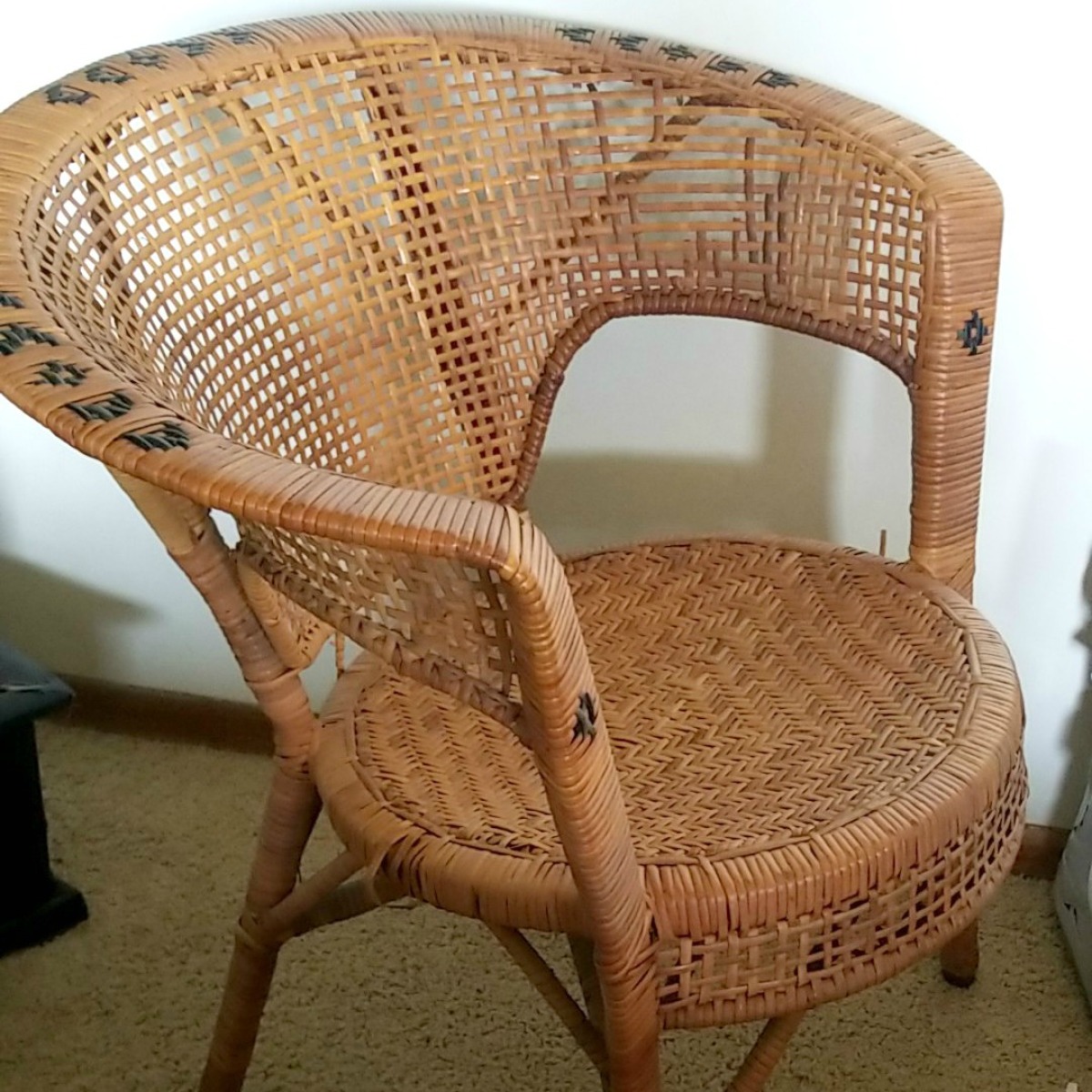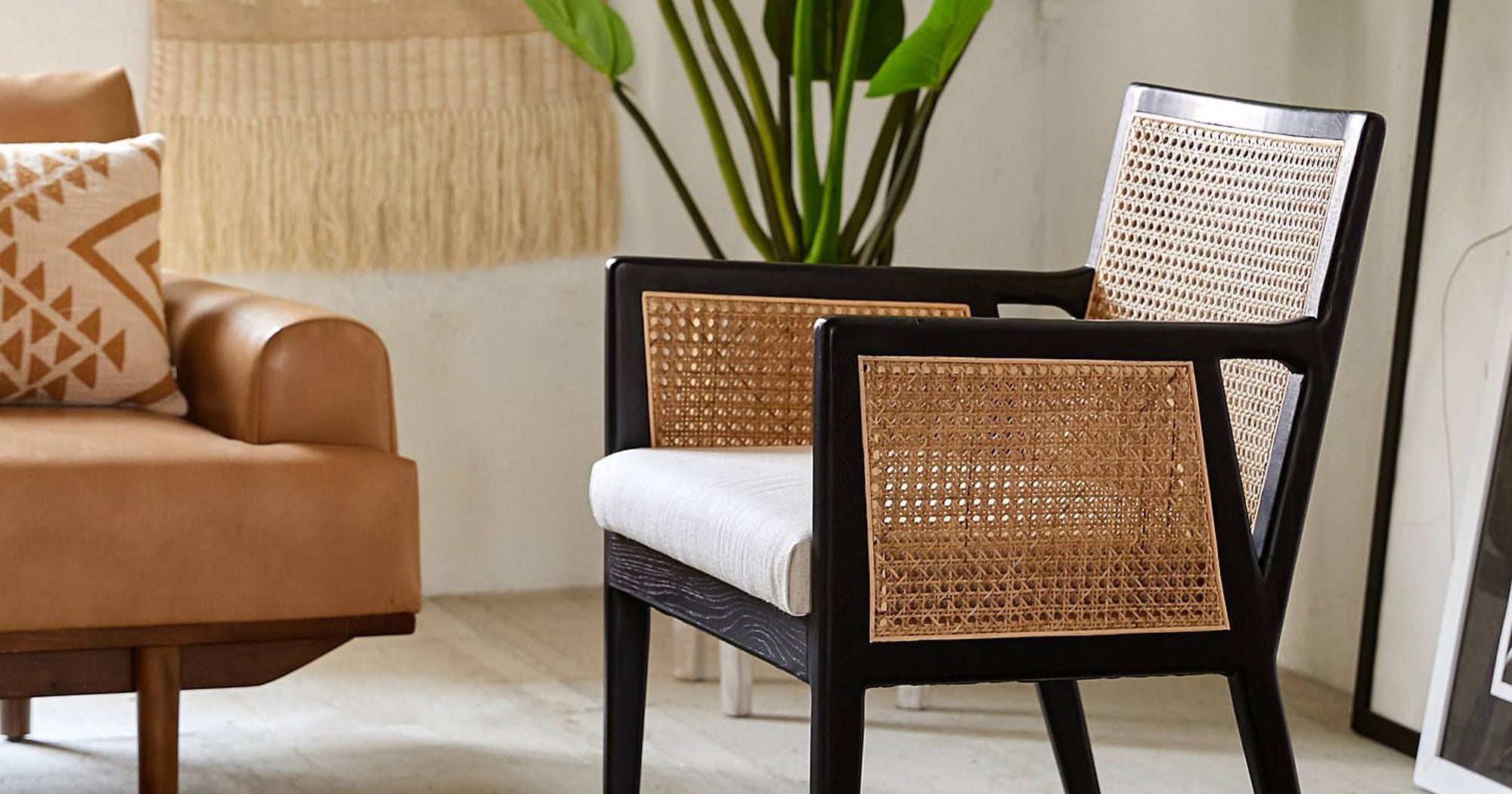Design and Construction

High back woven chairs, with their intricate craftsmanship and elegant aesthetics, are more than just furniture pieces. They embody a blend of functionality and artistry, showcasing the interplay of design and construction that dictates their strength, durability, and comfort.
Weaving Techniques and Structural Integrity
The weaving technique employed in high back woven chairs is paramount to their overall strength and flexibility. The intricate interlacing of materials creates a robust framework that can withstand significant weight and stress.
- Traditional Weaving: In traditional weaving, materials like cane, rattan, or wicker are interwoven to form a lattice-like structure. This technique results in a chair that is both flexible and strong, allowing it to adapt to the user’s weight distribution and provide a comfortable, yet supportive seating experience. The flexibility of the weave also contributes to the chair’s resilience, enabling it to bounce back from minor distortions and retain its shape over time.
- Modern Weaving: Modern weaving techniques often incorporate materials like synthetic fibers or metal wires, enhancing the chair’s strength and durability. These materials offer greater resistance to wear and tear, making them ideal for high-traffic areas or outdoor settings. The use of synthetic fibers also allows for a wider range of colors and patterns, adding a contemporary touch to the design.
Materials and Their Properties
The choice of materials significantly impacts the chair’s aesthetics, durability, and suitability for various applications.
- Natural Materials: Natural materials like cane, rattan, and wicker are renowned for their inherent strength and flexibility. Cane, with its strong, hollow stems, offers excellent durability and a natural, earthy appeal. Rattan, a type of palm vine, is known for its resilience and ability to withstand moisture, making it suitable for outdoor use. Wicker, a general term for woven materials, often includes a combination of cane, rattan, and other natural fibers, creating a versatile and visually appealing option.
- Synthetic Materials: Synthetic materials like polyethylene, polypropylene, and vinyl offer increased durability and resistance to fading, water damage, and pests. These materials are often used in outdoor furniture, as they can withstand harsh weather conditions and require minimal maintenance. The use of synthetic fibers also allows for a wide range of colors and textures, adding a contemporary touch to the design.
- Metal Materials: Metal materials like aluminum and steel offer exceptional strength and durability, making them suitable for high-traffic areas or applications requiring heavy-duty support. Aluminum is lightweight and resistant to corrosion, making it ideal for outdoor furniture. Steel, while heavier, offers superior strength and can be finished in various ways to enhance its aesthetic appeal.
Ergonomic Design Elements
The design of high back woven chairs is often focused on providing optimal comfort and ergonomics.
- Backrest Angle: The backrest angle is crucial for providing proper lumbar support and preventing back strain. A slightly reclined backrest angle promotes a relaxed posture and reduces pressure on the spine.
- Seat Depth: The seat depth should be sufficient to allow the user to sit comfortably with their feet flat on the floor. A deep seat can lead to slouching and discomfort, while a shallow seat may not provide adequate support.
- Armrest Placement: Armrests should be positioned at a height that allows the user’s arms to rest comfortably at a 90-degree angle. Properly placed armrests reduce strain on the shoulders and neck, promoting a more relaxed seating experience.
Types and Styles: High Back Woven Chair

High back woven chairs offer a diverse range of styles and types, catering to various aesthetic preferences and functional needs. Their intricate weaving patterns and varying designs make them a versatile addition to any interior space, from traditional settings to contemporary homes. This section delves into the different types of high back woven chairs, their distinct features, and the popular weaving patterns that contribute to their aesthetic appeal.
Types of High Back Woven Chairs
High back woven chairs are categorized into various types, each designed for specific purposes and settings. Here’s a breakdown of some common types:
- Armchairs: These chairs feature armrests, providing comfort and support. They are often found in living rooms, libraries, or bedrooms, offering a cozy and inviting seating option for relaxation or reading.
- Dining Chairs: Designed for dining tables, these chairs prioritize comfort and durability. They often have a sturdier construction and may have additional features like padded seats or backs for extended dining experiences.
- Lounge Chairs: Lounge chairs are designed for maximum comfort and relaxation. They typically have a lower seat height and wider, more reclined backs, making them ideal for lounging in living rooms or patios.
Styles of High Back Woven Chairs
High back woven chairs are available in a wide array of styles, reflecting different design philosophies and historical influences.
- Traditional: Traditional high back woven chairs often feature intricate weaving patterns, ornate carvings, and a classic aesthetic. They often draw inspiration from historical styles like Victorian or Colonial, incorporating elements like floral motifs, curved lines, and rich, dark wood finishes.
- Modern: Modern high back woven chairs emphasize clean lines, minimalist designs, and a focus on functionality. They often feature simple geometric patterns, neutral colors, and materials like metal or synthetic fibers.
- Contemporary: Contemporary high back woven chairs combine elements of modern and traditional styles, creating a unique and eclectic aesthetic. They may incorporate bold colors, unusual shapes, and unexpected materials, pushing the boundaries of traditional weaving techniques.
Weaving Patterns
The weaving patterns used in high back woven chairs play a significant role in their aesthetic appeal and overall design. Here are some popular patterns:
- Basket Weave: This simple and classic pattern is created by interlacing strands of material over and under each other, creating a grid-like design. It’s a versatile pattern suitable for various styles, from traditional to modern.
- Herringbone: This pattern features a distinctive V-shaped design, creating a visually interesting texture. It’s often used in chairs with a more contemporary aesthetic.
- Wicker: Wicker is a specific type of weaving technique using pliable materials like rattan or willow. It’s known for its intricate patterns and natural, rustic aesthetic.
Table of High Back Woven Chair Types
| Type | Key Features | Typical Uses | Armchair | Armrests, comfortable seating | Living rooms, libraries, bedrooms | Dining Chair | Sturdy construction, padded seats/backs | Dining rooms, kitchens | Lounge Chair | Low seat height, reclined back | Living rooms, patios |
|---|
Applications and Uses

High back woven chairs, with their blend of comfort, style, and durability, find a wide range of applications in various settings, seamlessly integrating into different design aesthetics and fulfilling diverse functional needs.
Incorporation into Interior Design Styles
High back woven chairs are versatile pieces that can be incorporated into various interior design styles, adding a touch of elegance and comfort to each.
- Farmhouse Style: These chairs, often crafted from natural materials like rattan or wicker, perfectly complement the rustic charm of farmhouse decor. Their natural textures and earthy tones create a warm and inviting atmosphere, blending seamlessly with exposed beams, reclaimed wood furniture, and vintage accents.
- Bohemian Style: Bohemian interiors, known for their eclectic mix of patterns, textures, and colors, find a perfect match in high back woven chairs. The chairs’ intricate weaves and bohemian-inspired designs, often featuring vibrant colors and intricate patterns, add a touch of whimsy and cultural influence to the space.
- Minimalist Style: Despite their intricate weaving, high back woven chairs can also be incorporated into minimalist spaces. Choosing chairs with clean lines, neutral colors, and a simple design can create a sense of serenity and sophistication, complementing the minimalist aesthetic’s focus on functionality and simplicity.
Suitability for Different Environments
High back woven chairs are suitable for various environments, offering both comfort and style.
- Homes: High back woven chairs are a popular choice for living rooms, bedrooms, and dining areas. Their comfortable seating and stylish design enhance the overall ambiance of the home.
- Offices: In office settings, these chairs provide a comfortable and stylish alternative to traditional office chairs. Their ergonomic design and supportive backrests promote good posture and reduce fatigue.
- Outdoor Spaces: Weather-resistant woven chairs made from materials like synthetic wicker or resin are perfect for outdoor spaces. They can be placed on patios, balconies, or around pools, adding a touch of comfort and style to the outdoor environment.
Living Room Layout with High Back Woven Chairs
A living room featuring high back woven chairs can be designed to showcase their versatility and functionality.
- Focal Point: Place a pair of high back woven chairs facing a fireplace or a large window, creating a cozy and inviting focal point.
- Conversation Area: Arrange a group of three or four high back woven chairs around a coffee table, creating a comfortable and stylish conversation area.
- Reading Nook: Place a high back woven chair in a corner of the living room, paired with a side table and a reading lamp, creating a peaceful and private reading nook.
Benefits and Drawbacks of High Back Woven Chairs
High back woven chairs offer numerous benefits, but it’s important to consider their potential drawbacks as well.
- Benefits:
- Comfort: The high backrests and cushioned seats provide excellent support and comfort.
- Style: High back woven chairs come in various styles, allowing you to find the perfect fit for your decor.
- Durability: Many woven chairs are crafted from durable materials like rattan, wicker, or synthetic wicker, making them long-lasting.
- Versatility: They can be used in various settings, from homes to offices to outdoor spaces.
- Drawbacks:
- Maintenance: Some woven chairs require regular cleaning and upkeep to maintain their appearance.
- Weight: High back woven chairs can be heavier than other types of chairs, making them difficult to move around.
- Cost: High-quality woven chairs can be expensive.
The high back woven chair, with its intricate patterns and cozy embrace, evokes a sense of tranquility and warmth. Perhaps you’re seeking something a bit more playful for your little one? Consider the whimsical charm of an owl high chair at Walmart , where their first meals are filled with joy and wonder.
Whether it’s a traditional woven chair or a whimsical owl high chair, both offer a comfortable and inviting space for relaxation and enjoyment.
The high back woven chair, a symbol of comfort and tradition, often finds its place in a child’s playroom. Just as a real chair provides a safe haven for a tired adult, these miniature versions offer a space for children to nurture their own fantasies, mimicking the adult world they observe.
A child might place their cherished baby doll in a baby doll stroller and high chair , mirroring the care they receive from their own parents. The high back woven chair, with its gentle curves and natural materials, embodies the timeless quality of childhood play, offering a haven for imagination and nurturing.
